Things to do in Tuscany
Tuscany combines natural splendour with ancient historical sites, and wonderful food and wine. This all comes together in the Chianti region, which can be explored in a circular route by car.
Tuscany also has more than its fair share of historic medieval villages. Montepulciano is the highest hill village, with an impressive limestone ridge and an historic centre untouched by development since 1580. Cortona, an endlessly popular destination, has been made even more famous by the novels of Frances Mayes, particularly her 1996 memoir, Under the Tuscan Sun, which was later adapted into a box office hit of the same name. San Gimignano is known for its 14 well-preserved medieval towers, while Siena has a UNESCO-listed Old Town full of lovely Renaissance churches.
The Etruscans made their way into Italy in about 900 BC and there are a number of fascinating Etruscan sites to explore in Tuscany. Some of the best remains can be found in Grosseto, Roselle, Saturnia, Sovana and Pitigliano. The ancient Roman city of Lucca is well worth a visit too, as is Pisa and its famous Leaning Tower. Florence could keep tourists occupied for many holidays all by itself.
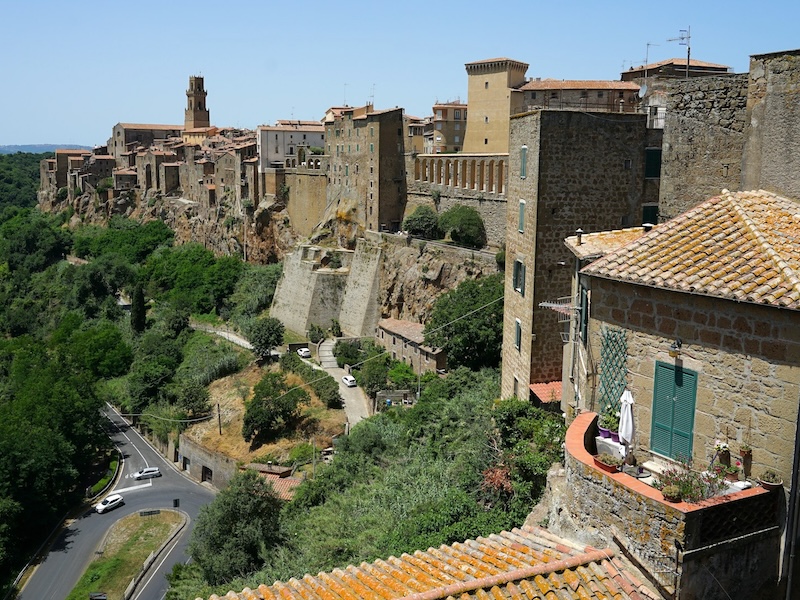
Etruscan Sites
Attracted by the mineral wealth found in the regions of Tuscany, Lazio and Umbria, the Etruscans made their way to Italy around 900 BC. They were preoccupied with the afterlife, de…
Etruscan Sites
Attracted by the mineral wealth found in the regions of Tuscany, Lazio and Umbria, the Etruscans made their way to Italy around 900 BC. They were preoccupied with the afterlife, dedicating much effort to carving burial sites into rock or constructing them out of stone slabs and filling them with artefacts.
The Museo Civico Archeologico in Grosseto contains a selection of Etruscan artefacts found in nearby tombs, while the most important excavated Etruscan and Roman remains in Tuscany are in Roselle. At Saturnia, travellers can explore rock-cut tombs, while the famous Tomb of Ildebrando is found in the Necropolis of Sovana.
The town of Pitigliano is peppered with Etruscan tombs and tunnels. The town itself is a spectacular vista of houses jutting out over soft limestone cliffs and caves bordering the River Lente. From this quaint town, visitors should head to the extensive necropolis on the outskirts of Marsiliana, and finish at Talamone and Maremma for visits to the Etruscan temple, Roman villa and baths.
Website whc.unesco.org/en/list/1158
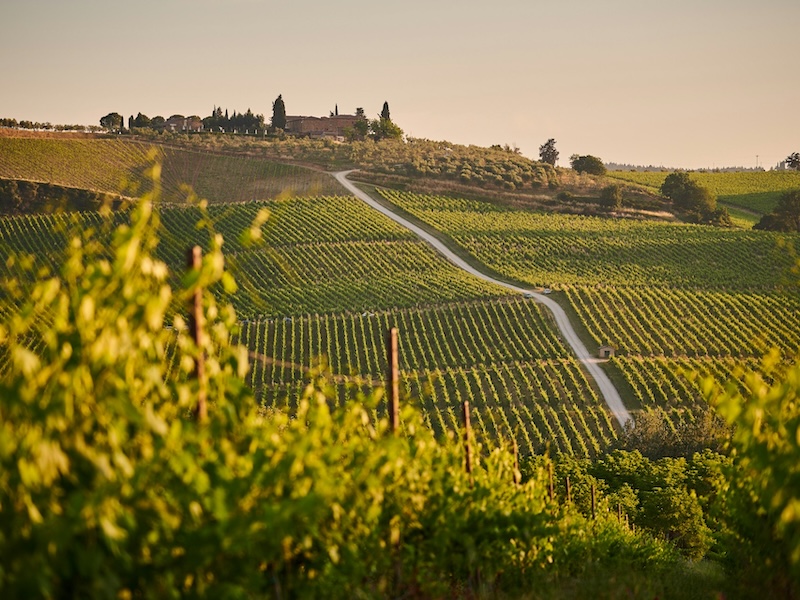
Chianti Region
A circular route from Siena through the Chianti Region provides visitors to Tuscany with a wonderfully scenic and sensory travel experience. The route covers the villages of the Ch…
Chianti Region
A circular route from Siena through the Chianti Region provides visitors to Tuscany with a wonderfully scenic and sensory travel experience. The route covers the villages of the Chianti Classico wine region, which are garnished with ancient castles and rambling farmhouses. The vineyards and wooded hills are best explored along the winding back roads or from within the sleepy hamlets.
The first stop is at Castello di Brolio, a magnificent vineyard owned by the Ricasoli family since 1167. The SS484 will go south of Brolio and north past the hamlets of San Gusme, Campi and Linari, before a diversion to the Meleto Castle. Another worthwhile stop is at Badia a Coltibuono, for its restaurant and Romanesque church.
The winding road west to Radda, in Chianti, is especially picturesque. A further nine miles (15km) from here is the delightful hamlet of Volapia and Castellina. Within the ramparts of this walled village is the Bottega del Vino Galla Nero, at Via della Rocca 13, which showcases the region's delectable wines and olive oils.
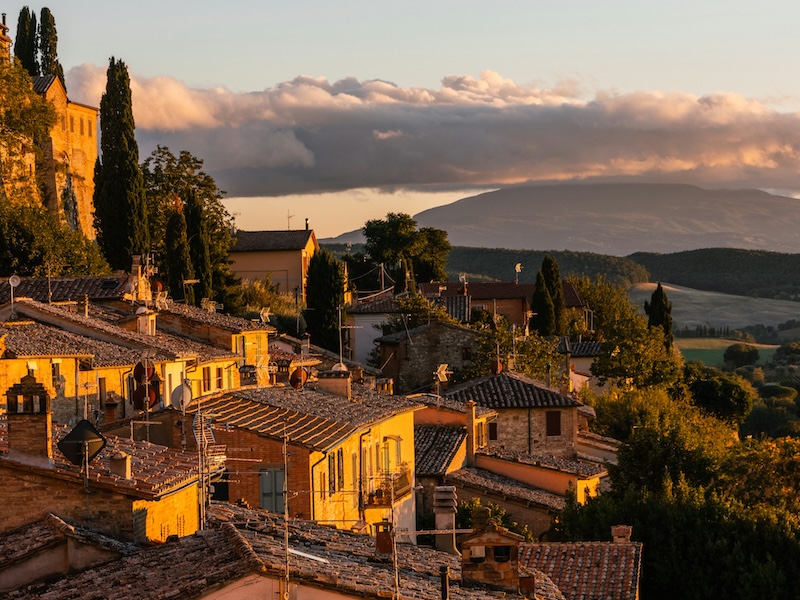
Montepulciano
Montepulciano is Tuscany's highest hilltop town, and is built along a narrow limestone ridge 1,950ft (605m) above sea level. It is fast being discovered by tourists seeking out the
Montepulciano
Montepulciano is Tuscany's highest hilltop town, and is built along a narrow limestone ridge 1,950ft (605m) above sea level. It is fast being discovered by tourists seeking out the best of the region, while still retaining its mystery and authenticity.
Sheltered within the fortified walls are charming streets packed with Renaissance-style palaces and churches. Within the intact historic centre, no major building work has been done since 1580, making it one of the best-preserved historic centres in Italy.
While Montepulciano's most celebrated achievement is its Vino Nobile vintages, other attractions include the pilgrimage church of Madonna di San Biagio; a treasured collection of Etruscan reliefs and funerary urns; and the views from the tower at the Palazzo Comunale.
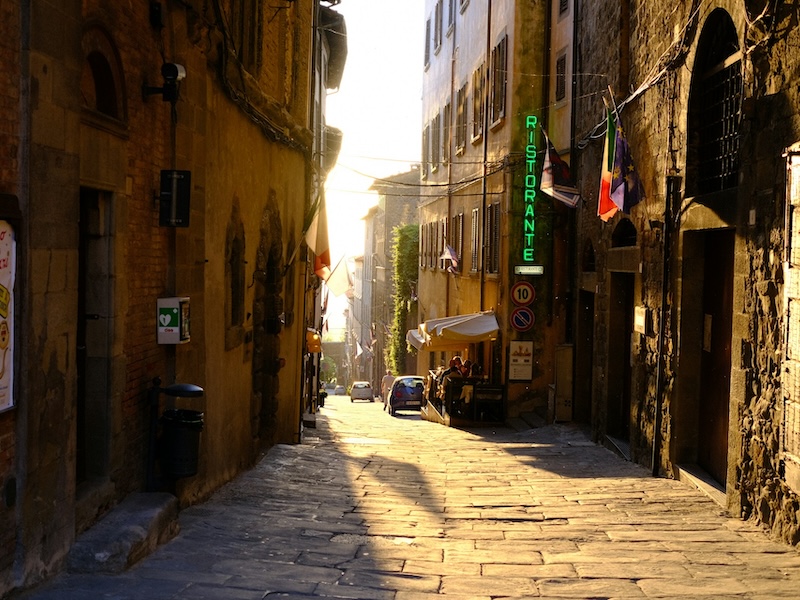
Cortona
Dotted with olive groves and vineyards, Cortona is a richly historic city that enjoys a scenic position above Lake Trasimeno and the plain of Valdichiana. It has some of the best-p…
Cortona
Dotted with olive groves and vineyards, Cortona is a richly historic city that enjoys a scenic position above Lake Trasimeno and the plain of Valdichiana. It has some of the best-preserved Etruscan buildings, as well as a strong artistic pedigree through its sons, Renaissance painter, Luca Signorelli, and Baroque painter and architect, Pietro da Cortona.
Most of the Etruscan city is hidden in basements but part of the original 4th-century BC walls can be seen at the base of Porta Colonia's outer side. Climbing the city's cut-stone staircases and meandering along its cobbled streets guides visitors back through the past from the Renaissance to the Middle Ages and beyond. The medieval houses along Via Janelli are the oldest in Italy; other special sites are the Palazzo Comunale, Museo dell'Accademia Etrusca and the church of San Francesco.
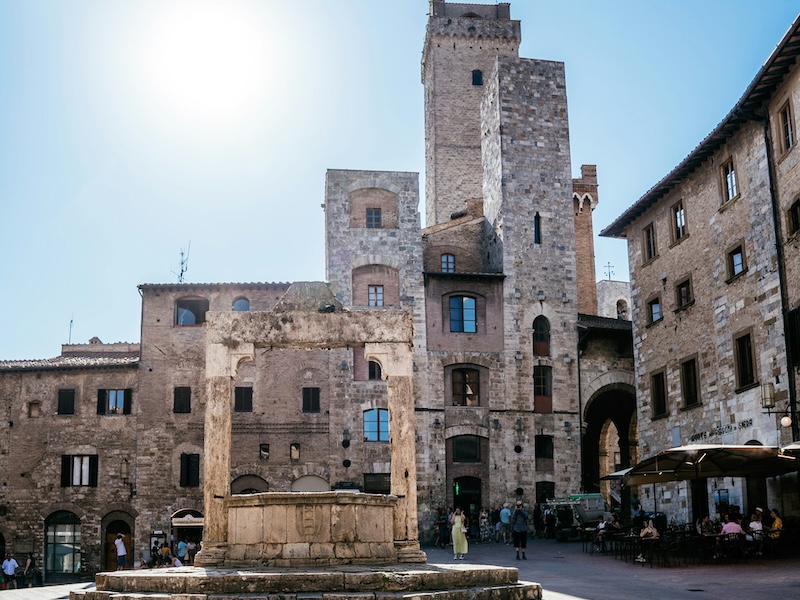
San Gimignano
San Gimignano is a popular village on the tourist trail that attracts many with its charm, history and towers. Only 14 of the original 72 towers remain, which is unsurprising as th…
San Gimignano
San Gimignano is a popular village on the tourist trail that attracts many with its charm, history and towers. Only 14 of the original 72 towers remain, which is unsurprising as their dual role as status symbols and defensive structures saw them caught in the middle of the many feuds that eventually caused the town's downfall.
Nevertheless, these 14 towers are among the best-preserved in Italy, and are the envy of Florence and Bologna, whose towers have long since crumbled. The ideal starting-point for a visit to San Gimignano is the Piazza del Duomo, which is the centre of the town and framed by historical buildings.
Nearby is the Collegiata, a church that dates from the 11th-century and is famed for its frescoes, which include The Creation by Bartolo di Fredi, who was one of the most influential painters in the region during the second half of the 14th century.
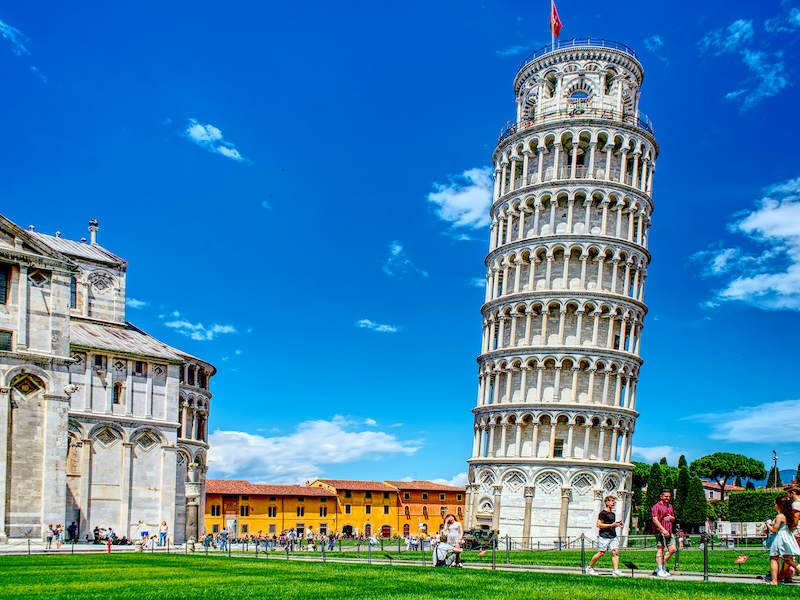
Pisa
Most famous for its leaning tower, Pisa's equally notable drawcards include its maritime legacy dating to 1000 BC, its prized university and its status as the birthplace of Galileo…
Pisa
Most famous for its leaning tower, Pisa's equally notable drawcards include its maritime legacy dating to 1000 BC, its prized university and its status as the birthplace of Galileo Galilei, who many consider to be the father of modern science. The Pisans also created one of the most beautiful squares in the world in the Campo dei Miracoli (Field of Miracles).
The essential holiday attraction is the famous Leaning Tower, whose layers of heavy marble were constructed on a shifting subsoil foundation that has been the bane of Pisan engineers for more than 800 years. It seems that the tremulous soil underneath the Field of Miracles has exacted its price on the other buildings too, most notably San Michele dei Scalzi.
Other attractions of interest in Pisa include the Museo delle Sinopie; the Museo dell'Opera del Duomo, with its arabesque panels and Corinthian capitals; and the Museo Nazionale di San Matteo's Florentine art from the 12th through to the 17th-centuries.
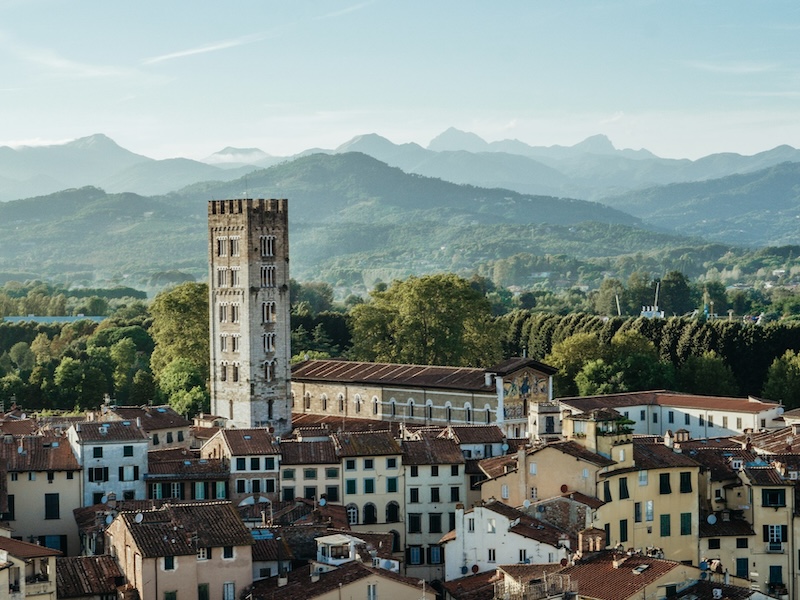
Lucca
The charming city of Lucca is laid out on ancient Roman roads and framed within well-preserved medieval ramparts. Founded by the Etruscans and a Roman colony from 180 BC, it still
Lucca
The charming city of Lucca is laid out on ancient Roman roads and framed within well-preserved medieval ramparts. Founded by the Etruscans and a Roman colony from 180 BC, it still boasts many fascinating old buildings.
The city walls are one of the main attractions as they are still perfectly intact despite the expansion of the city and their great age. The city is famous for being the home of Giacomo Puccini, who's considered the greatest proponent of Italian opera after Verdi. His 15th-century house serves as a shrine.
Lucca is also celebrated for its museums, monuments and splendid Romanesque churches. With its flat terrain and narrow lanes, Lucca is perfectly suited to explorations on foot or by bicycle, the same methods local people use to commute. Key sights on a visit to Lucca are the Duomo, San Michele and San Frediano, as well as the Museo Nazionale Guinigi, Torre Guinigi and an ancient Roman amphitheatre.
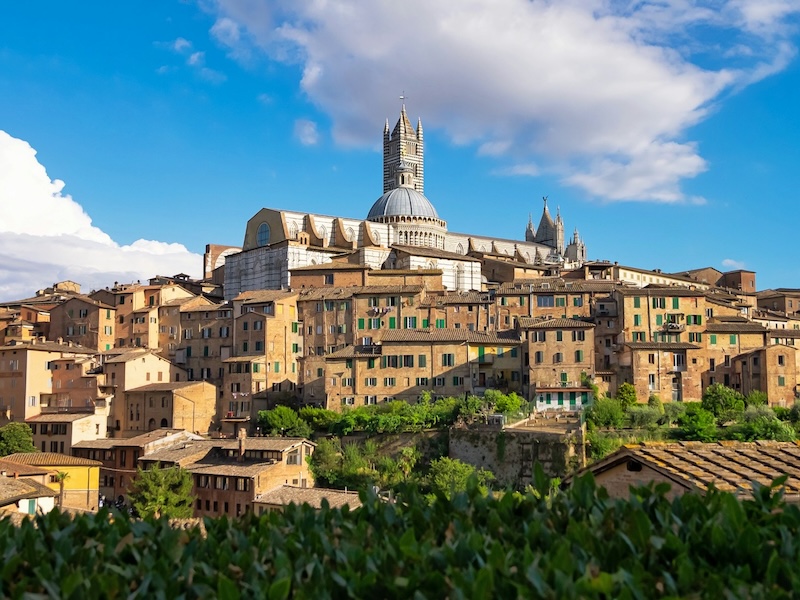
Siena
Siena is one of Italy's best-preserved medieval cities, and one of the major drawcards for visitors to the popular regions of Umbria and Tuscany. Siena's peak as a wealthy city-sta…
Siena
Siena is one of Italy's best-preserved medieval cities, and one of the major drawcards for visitors to the popular regions of Umbria and Tuscany. Siena's peak as a wealthy city-state dates back to the 13th-century, when the Duomo di Siena was completed along with the distinctly scallop-shaped Piazza del Campo, which is regarded as one of the finest public spaces in Europe.
The town's university was founded in 1240, and to this day ranks as one of the most prestigious in Italy. Amid the winding lanes of the medieval city are many gorgeous churches and museums, chief among them the 13th-century Chiesa di San Domenico; the Fortezza Medicea; and the pilgrimage site of Sanctuary of St Catherine of Siena.
Notable landmarks include the Palazzo Pubblico, the Duomo, Palazzo Piccolomini, Pinacoteca Nazionale and the Museo dell'Opera. Torre del Mangia is the bell tower to the left of Palazzo Pubblico which stands at 330ft (102m), the second highest in Italy.



